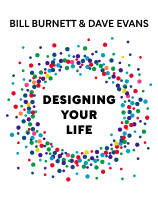

This article is an excerpt from the Shortform book guide to "Designing Your Life" by Bill Burnett and Dave Evans. Shortform has the world's best summaries and analyses of books you should be reading.
Like this article? Sign up for a free trial here .
What are the Odyssey Plans you wish to design? Where do you want your life to go over the next five years?
An Odyssey Plan details a particular life you want to live—both personally and professionally. You can design your life by making three alternate plans that paint a picture of the next five years. It’s critical to get out of the mindset that there’s only one path to choose from.
Keep reading to learn how to create the Odyssey Plans for your life.
Designing Multiple Lives
You can design multiple life plans for yourself. You’ll develop “prototype” models for three separate lives that you could live.
Defective belief: I have to identify, plan, and execute my one best life.
- Corrected belief: I have multiple wonderful lives and life plans inside me. I can choose which one to build next.
It’s amazing what can happen when you stop trying to “get it right” by building what you conceive as the only right life for you. You can get wonderful results—and often unexpected results, ones far better than you could have planned for—if you intentionally think through multiple potential life paths and life designs for yourself.
The Odyssey Plans You Make
To apply this principle, develop three separate Odyssey Plans, each one detailing a different life that you could live, including both career factors and non-career factors. Limit each of the Odyssey Plans to a five-year period, which seems to be a natural rhythm; most people’s lives unfold in three- to five-year “seasons.” Considering making at least one of the Odyssey Plans “unrealistic” or even “wild,” like living off the grid in a tent in the Amazon rainforest (if that’s your thing).
Your first Odyssey Plan will center on something you’ve already got in mind. It will be either the life you’re actually living (imagined forward by five years) or a good idea that you’ve been developing for your life.
Your second plan will describe what you’d do if the area you currently work in or have been planning to work in disappeared. For example, if you’re a management consultant, what would you do if suddenly that industry just dried up and went away?
Your third plan will describe what you’d do if money and reputation didn’t matter. What would you do if you knew for certain that: A) it would support you materially, and B) nobody would laugh at you?
Each of the Odyssey Plans will need the following components:
- A six-word title that captures the plan’s essence.
- A visual timeline that includes not just work events but personal events that you hope to experience—marriage, running a marathon, or whatever.
- A dashboard to gauge the following:
- Your resources: Do you have the time, money, skill, and other necessary resources for the plan?
- Your “like” level: How much do you like the plan?
- Your confidence level: How confident are you about this plan?
- Coherence: Is the plan internally consistent, and does it resonate with your work and life philosophies?
- Two or three questions the plan raises.
The Final Step
The final step of designing your multiple lives is to share them with a group of supportive people. You can’t always see yourself accurately. You need other people’s input. Pick a handful of people (three to six) whom you trust and who will provide honest and constructive reactions to the Odyssey Plans. Share your plans with this group, and write down what they say. Let their feedback inform your decisions.

———End of Preview———
Like what you just read? Read the rest of the world's best book summary and analysis of Bill Burnett and Dave Evans's "Designing Your Life" at Shortform .
Here's what you'll find in our full Designing Your Life summary :
- Why finding your "true passion" in life is a myth
- The five mental attitudes in design thinking
- How to design a meaningful life in which you can truly thrive






